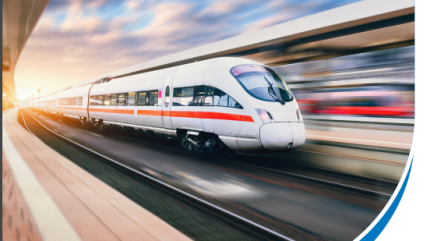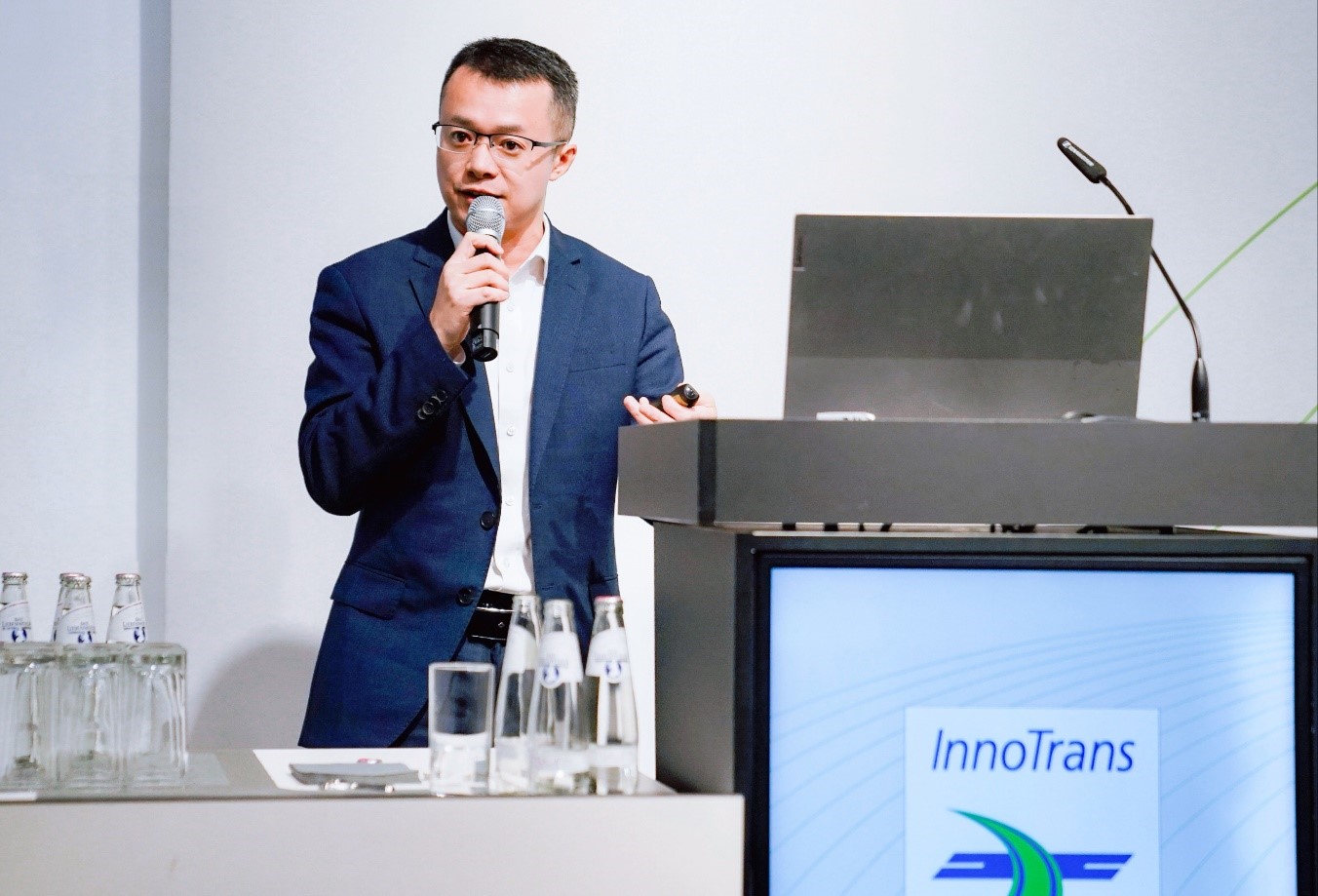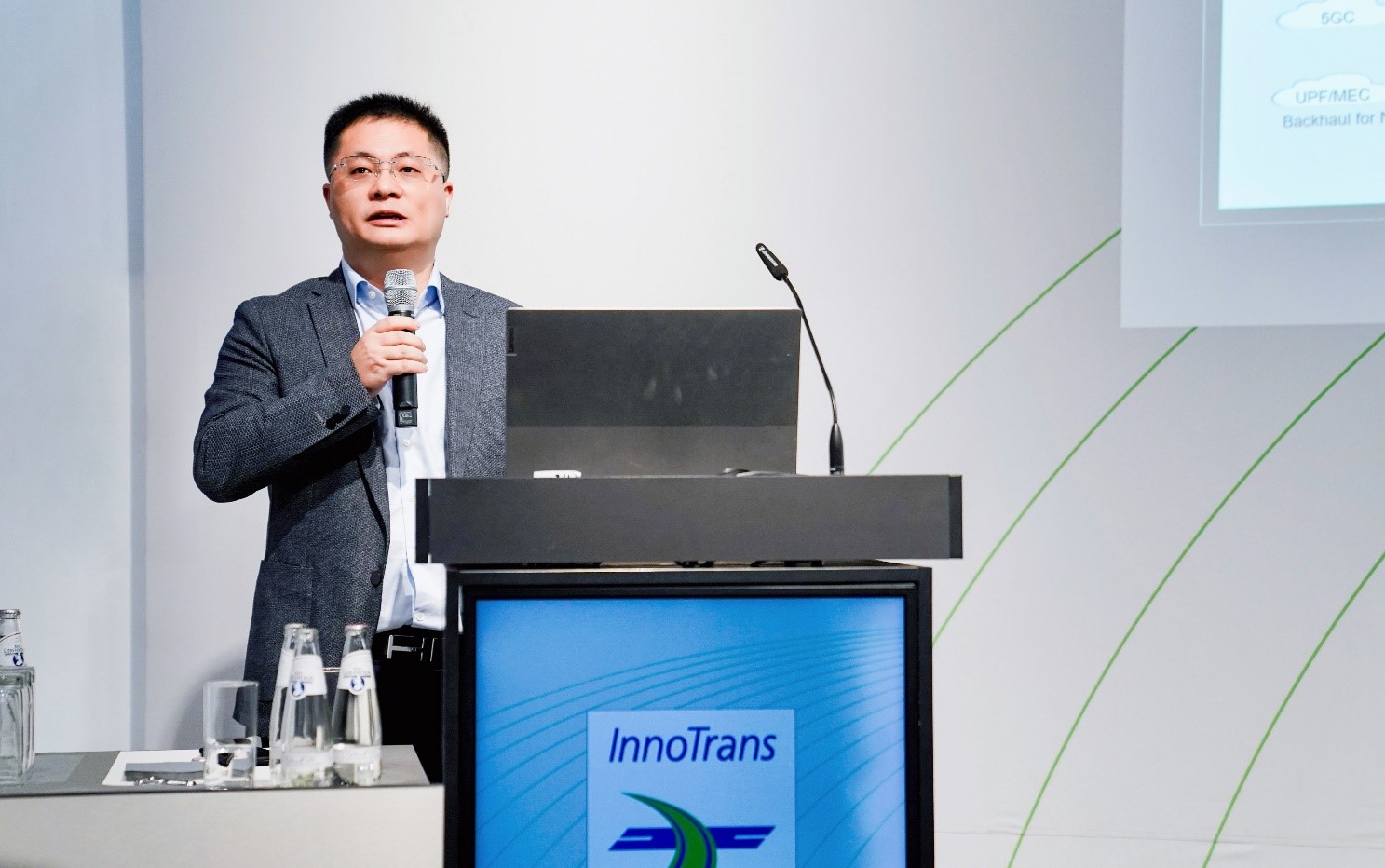
At InnoTrans 2024, Berlin, Huawei released the white paper Huawei Railway Wireless for FRMCS. This white paper illustrates how necessary FRMCS is and how it can be implemented in railway digital transformation from the perspectives of industry trends, standards interpretation, spectrum selection, networking architecture, and key wireless technologies. It provides important insights and ideas for planning and constructing the next generation of railway wireless networks.
The rail transportation industry is striding toward an era of broadband, cloud, and intelligence. Xiang Xi, Director of the Overseas Rail Development Dept of Huawei Smart Transportation BU, emphasized in his keynote speech that a reliable communications system features high bandwidth, wide coverage, and low latency, and is crucial for implementing broadband across rail transportation. According to him, migrating services to the cloud is becoming increasingly popular as it allows for centralized use of IT resources and unified O&M, which can reduce investment costs. “Big data and AI will speed up the convergence of service data, the value of which can then be unlocked to empower the intelligent transformation of services and enhance production management efficiency,” said Xiang Xi. He also noted that rail transportation is rapidly integrating with other means of transportation, and this will lead to a comprehensive transportation system.

This year, the International Union of Railways (UIC) released the FRMCS standard document, which aims to establish a comprehensive set of standards for FRMCS. At InnoTrans 2024, Huawei unveiled a white paper named Huawei Railway Wireless for FRMCS, which draws on its technical expertise in the wireless field. The white paper specifies the major challenges that railway customers face during mobile communications upgrades, interprets the latest FRMCS standards, and highlights the advantages of the FRMCS over traditional narrowband systems.

Sheng Fu, Director of Transportation Industry Solution, Enterprise Wireless Marketing & Solution Sales Dept, Huawei, stated that Huawei has proposed 5G-oriented solutions to help railway customers smoothly upgrade their wireless communications systems, as well as to drive their digital and intelligent transformation. In line with the latest FRMCS standards released by UIC, these solutions leverage next-generation railway wireless communications networks with high bandwidth and low latency, while considering key factors like customer requirements, technical evolution, ecosystem, and costs.

In his keynote speech, Vice President of Enterprise Optical Domain at Huawei, Nick Liu, addressed the key challenges and opportunities facing the industry, such as evolution of wireless mobile communications. He emphasized Huawei’s focus on digital upgrades in the railway industry and the launch of its next-generation optical communications bearer network solution based on the MS-OTN platform. This solution supports converged access of E1, SDH, MPLS-TP, and fgOTN, containing features such as high bandwidth, high reliability, low latency, and easy O&M. It fully meets the current service needs of railways and can facilitate the smooth evolution of wireless systems from GSM-R to FRMCS, ensuring safe and stable railway operations.

Pan Wang, Chief Solution Architect of Transportation Network, Data Communication Product Line, Huawei, said in his keynote speech that “Based on innovative IPv6 Enhanced technology, Huawei’s smart railway FRMCS bearer network solution enables high reliability, easy deployment, excellent experience, smart O&M, and smooth evolution.” He went on to explain how the network supports end-to-end service deployment for access, aggregation, and core. It centrally carries diverse services like FRMCS, GSM-R, and passenger information system (PIS) and ensures safe and stable railway operations, enabling smart railways to unleash digital productivity.
During the event, Huawei showcased a comprehensive range of scenario-specific solutions and star products for the rail industry, including leading ICT infrastructure, as well as smart urban rail and smart railway solutions. Through these, Huawei aims to shape full connectivity for the rail industry and enable safe, intelligent, green, and sustainable development.
Up to now, Huawei has served more than 300 urban rail lines across 70 cities and more than 180,000 km of railways worldwide. Looking ahead, Huawei will always believe in openness, cooperation, and shared success. Huawei looks forward to working closely with customers and partners to accelerate the digital and intelligent transformation of the global transportation industry.
Download Huawei’s new white paper for free here


